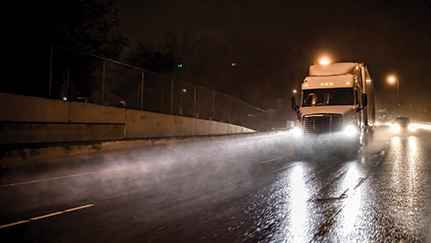Tips for safe night driving
Print
Learn effective measures to minimize after-dark dangers when you drive.

Driving at night can be dangerous, as nearly half of all fatal traffic collisions occur after dark. Darkness can cause changes in perception and how you see your surroundings, and it can also increase the feelings of weariness or fatigue that normally occur when driving long distances.
Most drivers are not aware of the dramatic difference that darkness can have in their ability to cope with routine driving situations, making those drivers more vulnerable to dangerous situations on the road.
To minimize after-dark dangers, follow these guidelines while you drive:
- Avoid looking directly into oncoming headlights: Instead, look to the right edge of the road.
- Do not flash your high beams to alert other drivers: This may create a dangerous glare or distraction for the other driver.
- Keep your eyes moving: This can help reduce the effects of eye fatigue.
- Be aware of your level of fatigue: Take a break or stop when tired and keep your cab or vehicle well-ventilated and slightly cool to help you stay alert.
- Keep your vehicle lights on: Keep your vehicle lights on from sunset until sunrise; during periods of rain, snow, hail, sleet, or fog; and at any time you can't clearly see the road ahead for a distance of at least 500 feet.
- Maintain clean and defect-free vehicle windows and mirrors: This will help you see and be seen by other drivers.
- Watch out for impaired drivers: Impaired drivers typically make sudden stops and abrupt lane changes and fail to maintain a consistent speed.
- Turn interior lights off: Keep interior lights off and adjust your instrument panel lights as low as possible — without compromising your ability to read the gauges.
- Avoid overdriving your headlights: Driving so fast that you're unable to stop within the distance illuminated by the vehicle's headlamps can be dangerous.
